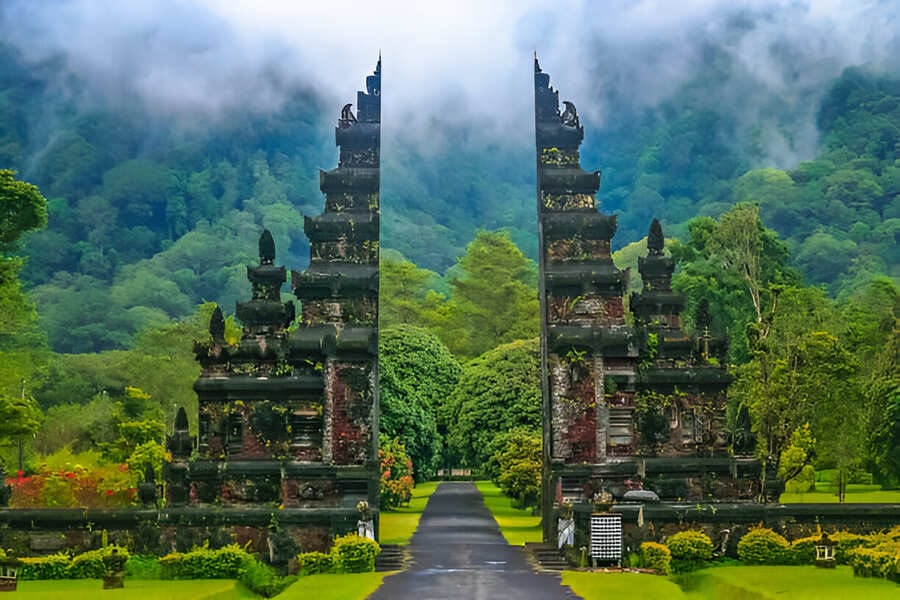
Angkor Wat: The Jungle-Clad Epic of the Khmer Empire
Nestled deep within the lush jungles of Cambodia, Angkor Wat stands as a breathtaking testament to the grandeur of the Khmer Empire. This sprawling temple complex, the largest religious monument in the world, is not just an architectural marvel but also a symbol of spiritual devotion, artistic brilliance, and historical resilience. From its towering spires to its intricate bas-reliefs, Angkor Wat tells a story of a civilization that once dominated Southeast Asia—and continues to captivate travelers, historians, and archaeologists alike.
A Monument to the Gods
Built in the early 12th century by King Suryavarman II, Angkor Wat was originally dedicated to the Hindu god Vishnu, reflecting the Khmer Empire’s strong Hindu influences. However, as the empire gradually embraced Buddhism, the temple transitioned into a Buddhist site, a shift evident in the later-added statues and carvings.
The temple’s design is a microcosm of the Hindu universe: its central towers represent Mount Meru, the mythical abode of the gods, while the surrounding moat symbolizes the cosmic ocean. The sheer scale of Angkor Wat—covering over 400 acres—speaks to the ambition of its creators, who sought to build a heaven on Earth.
Architectural Splendor: A Masterpiece in Stone
Angkor Wat’s architecture is a blend of symmetry, symbolism, and engineering genius. The temple is constructed from sandstone blocks, quarried from the holy mountain of Phnom Kulen and transported along a network of canals. The precision of its construction is astounding, with tightly fitted stones requiring no mortar.
The temple’s most iconic feature is its five lotus-shaped towers, which rise majestically above the jungle canopy. The central tower, standing at 213 feet (65 meters), dominates the skyline, while the four surrounding towers create a harmonious silhouette.
The outer walls are adorned with over 1,200 square meters of intricate bas-reliefs, depicting scenes from Hindu epics like the Ramayana and Mahabharata, as well as historical events such as King Suryavarman II’s military processions. One of the most famous reliefs, the Churning of the Ocean of Milk, illustrates a pivotal Hindu myth in stunning detail.
The Mystique of the Jungle
What makes Angkor Wat even more enchanting is its setting. Over the centuries, the temple was slowly reclaimed by the jungle, with massive silk-cotton and strangler fig trees weaving their roots through the stone. This fusion of nature and architecture creates an otherworldly atmosphere, particularly at sunrise when the temple’s silhouette emerges from the mist.
Nearby, the ruins of Ta Prohm—another Angkorian temple—showcase nature’s relentless power, with towering trees growing directly from the ruins. This surreal landscape has earned Angkor Wat a reputation as one of the most photogenic archaeological sites in the world.
A Legacy That Endures
Despite centuries of abandonment, war, and environmental threats, Angkor Wat remains a source of national pride for Cambodia, even appearing on the country’s flag. UNESCO designated it a World Heritage Site in 1992, prompting extensive restoration efforts to preserve its fragile structures.
Today, Angkor Wat attracts millions of visitors each year, drawn by its mystical beauty and historical significance. Whether exploring its labyrinthine corridors, witnessing the golden glow of sunrise over its spires, or simply marveling at its artistic details, travelers leave with a deep appreciation for the Khmer Empire’s enduring legacy.
Visiting Angkor Wat: Practical Tips
- Best Time to Visit: Early morning (before sunrise) or late afternoon to avoid crowds and heat.
- Dress Code: Modest clothing covering shoulders and knees (required for temple entry).
- Must-See Features:
- Sunrise at the reflection pool
- The bas-relief galleries
- The upper terraces (accessible via steep stairs)
- Nearby temples like Bayon and Ta Prohm
Angkor Wat is more than just a ruin—it’s a journey through time, a masterpiece of human achievement, and a reminder of nature’s power to both destroy and preserve. For those who walk its ancient corridors, the temple offers not just a glimpse into history, but an unforgettable encounter with the soul of the Khmer Empire.





















